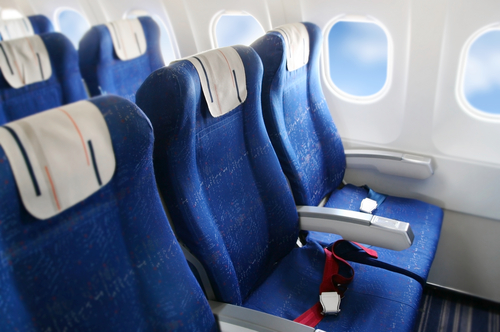PERTH, Australia – The Malaysian airliner’s disappearance underscores the need for improvements in security, both in tracking aircraft and in screening passengers, the International Air Transport Association said Tuesday.
Investigators, meanwhile, were conducting a forensic examination of the final recorded conversation between ground control and the cockpit of Malaysia Airlines Flight 370 before it went missing three weeks ago with 239 people on board, the Malaysian government said.
The examination could shed light on who was in control of the cockpit and will also seek to determine if there was any stress or tension in the voice of whoever was communicating with ground control _ crucial factors in an air disaster investigation.
The IATA announced it is creating a task force that will make recommendations by the end of the year on how commercial aircraft can be tracked continuously.
“We cannot let another aircraft simply vanish,” said Tony Tyler, the director general of IATA, whose 240 member airlines carry 84 per cent of all passengers and cargo worldwide.
Tyler also urged governments to step up the use of passport databases such as the one operated by Interpol to determine if they have been stolen. Most countries including Malaysia don’t run passports through Interpol’s computer system.
The presence of two men on the Malaysia Airlines flight with stolen passports had raised speculation of a possible terrorist link, but it is now thought they were migrants attempting to get to Europe. Nonetheless, their easy access to the flight “rings alarm bells,” Tyler said.
Responding to repeated media requests, Malaysia’s government released a transcript of the conversation between the cockpit and air traffic controllers, which showed normal exchanges as the cockpit requested clearance for takeoff, reported it had reached cruising altitude and left Malaysian air space.
“Good night Malaysian three-seven-zero,” were the final words received by ground controllers at Kuala Lumpur’s international airport at 1:19 a.m. on March 8. On Monday, the government changed its account of the final voice transmission which it had earlier transcribed as “All right, good night.”
There was no explanation of why the last words were changed. The conversation was in English, the universal language of aviation.
Malaysia has been criticized for its handling of the search, particularly its communications to the media and families of the passengers. In Tuesday’s statement, the government said police and forensic examinations were trying to confirm if the voice in the final conversation belonged to the co-pilot as was earlier believed.
The hunt for Flight 370 has turned up no confirmed sign of the Boeing 777, which vanished en route from Kuala Lumpur to Beijing.
The search area for the plane has shifted as experts analyzed the plane’s limited radar and satellite data, moving from the seas off Vietnam and eventually to several areas west of Australia. The current search zone is a remote 254,000-square kilometre (98,000-square mile) area roughly a 2 1/2-hour flight from Perth.
The 11 planes involved in the search Tuesday returned to their base in Perth without any significant sightings, the Australian Maritime Safety Authority said.
Low clouds, rain and choppy seas hampered the search efforts. One aircraft, a Japanese coast guard plane with high-performance radar and infrared cameras, completed just one of its three planned passes over the search area, then turned back because of the conditions. It descended to just 150 metres (500 feet) above the whitecaps at one point, but the crew members still couldn’t see anything out the windows.
Some of the aircraft have occasionally dipped even lower above the sea for brief periods, raising concerns of collisions with ships that are crisscrossing the zone.
On Tuesday, Australia deployed an airborne traffic controller to prevent collisions as search planes fly over the Indian Ocean.
An Australian air force E-7A Wedgetail equipped with advanced radar made its first operational flight, AMSA said. Angus Houston, who heads the joint agency co-ordinating the multinational search effort, said the modified Boeing 737 will monitor the increasingly crowded skies over the remote search zone.
Under normal circumstances, ground-based air traffic controllers use radar and other equipment to track all aircraft in their area of reach and direct planes so they are at different altitudes and distances. This enforced separation _ vertical and horizontal _ prevents collisions. But the planes searching for Flight 370 are operating over a remote patch of ocean that is hundreds of kilometres (miles) from any air traffic controller.
Houston, a former Australian defence chief, called the search effort the most challenging one he has ever seen. The starting point for any search is the last known position of the vehicle or aircraft, he said.
“In this particular case, the last known position was a long, long way from where the aircraft appears to have gone,” he said. “It’s very complex, it’s very demanding.”
“What we really need now is to find debris, wreckage from the aircraft,” he said. “This could drag on for a long time.”
Items recovered so far were discovered to be flotsam unrelated to the Malaysian plane. Several orange-colored objects spotted by plane Sunday turned out to be fishing equipment.
___
McGuirk reported from Canberra. Associated Press writers Eileen Ng in Kuala Lumpur, Kristen Gelineau in Sydney, and Jocelyn Gecker in Bangkok contributed to this report.
